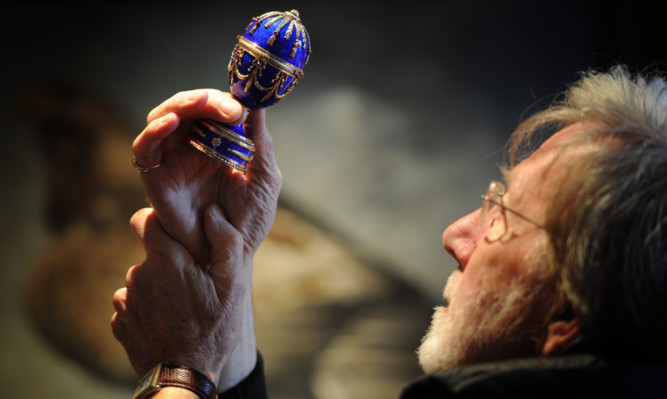The romantic tale of a Scottish dancer who achieved fame behind the Iron Curtain has been revealed after an exceptional jewelled egg came on to the market.
The esteem with which she was held in the Soviet Union is reflected in the £30,000 price tag now attached to her retiral gift.
When the woman left the Bolshoi Ballet in the 1950s, the authorities felt moved to make an extravagant gesture for her contribution on the Moscow stage for the world-famed dance company.
What the common people of Russia might have made of such opulence in Communist Russia is unrecorded but the craftsmanship has been much appreciated since it made its way to Scotland.
“It was given as a gift to a retiring ballerina when she was leaving by the Russian government,” said fine art dealer Ian Imrie, from Bridge of Earn.
He recently acquired the egg from the family of the ballerina, who do not wish to be identified.
Although it was presented in the 1950s, the object dates to the early 20th century, Mr Imrie believes.
It features ultramarine enamel, two colours of Russian gold, rose cut diamonds, rubies, a semi-precious moonstone and in the interior, which is lined with water silk, a bouquet in a gold basket decorated with enamel, rubies and diamonds.
“It is very rare, the quality is exceptional the Russians have never been beaten at this type of workmanship,” said Mr Imrie. “The quality of the stones is spectacular and the enamelling is out of this world.”
Mr Imrie has had research done and has found that the egg’s maker did contract work for the magic name associated with Russian jewelled eggs, the master craftsman Carl Faberg.
Although the company still operate today, the pinnacle of their fame relates to the pre-revolution period of 1885 to 1917 when they made eggs for the Russian royal family.
The Faberg egg has become a symbol of luxury and are regarded as masterpieces of the jeweller’s art.
Mr Imrie is hoping that someone with deep pockets will be as mesmerised by the egg as he was.
